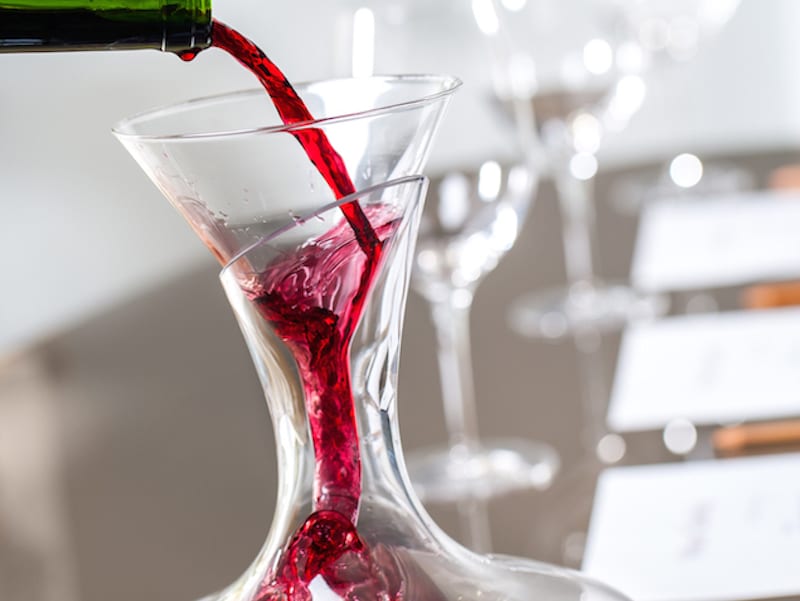Do you know when to decant wine? Learn from one of NYC’s top sommeliers why the technique works and the when to do it.
Richard Breitkreutz, a veteran sommelier of the New York City restaurant scene and Corporate Beverage Director for BR Guest Hospitality has given us the low down on decanting. Besides being an impressive presentation, decanting does have a purpose. Read on to find out when you should do it and when it is just an unnecessary step.
We’ve all seen the beautiful, glass contraptions being trotted past us in a fancy restaurant when a patron orders an expensive bottle of wine and maybe you even have one on display in your China cabinet. But how often do you really need to use it? As with all matters concerning wine, the answer is not straightforward and everyone has their differing opinions. Richard is a pro-decanter, who argues that all wines improve with decanting.
What does decanting really do? Most decanters are large, clear vessels to better see the wine and to create a bigger surface area so the wine can better interact with air, specifically oxygen.
Here are Richard’s four favorite reasons to decant a bottle of wine:
Sediment
Overtime, red wines start to lose their color with the color dropping off in the bottle and collecting as sediment. A good rule of thumb is to decant red wines over ten years old. When decanting because of sediment it is important to use a light source under the bottle of wine in order to better see the sediment. In many restaurants you will see candles used. Candles do look elegant but a good flashlight will work just as well. For more delicate varietals, I would recommend standing the bottle up for at least a day or resting the bottle in an angled basket before opening in order to let the sediment settle to the bottom of the bottle. At this point you may then gently pour them.
Oxygen
Sometimes very young wines or certain varietals such as Nebbiolo or Syrah benefit from getting exposed to oxygen for a few minutes or in some cases for a few hours in order to fully open up and display their full aromas and flavors. In this case it is not uncommon to do a fast decant where a bottle gets poured rapidly into a decanter in order to maximize its exposure and incorporation of air. I have even had to decant some very old Rieslings (yes, white wines) in order to get them to come alive.
Temperature
Most restaurants have one temperature that they store all of their white wines and another for all of their red wines. If a wine (either white or red) is too cold a quick decant can help bring it to a slightly warmer and more palatable temperature. Expensive White Burgundy is a good example of a wine that you may consider decanting because of temperature.
It looks fancy
It has to be considered that having your wine decanted and then served looks great and adds a theatric appeal to the evening. The act of decanting can send the statement that this guest is important. If you pull out your new decanting knowledge at your dinner party, you are sure to impress your guests.
















